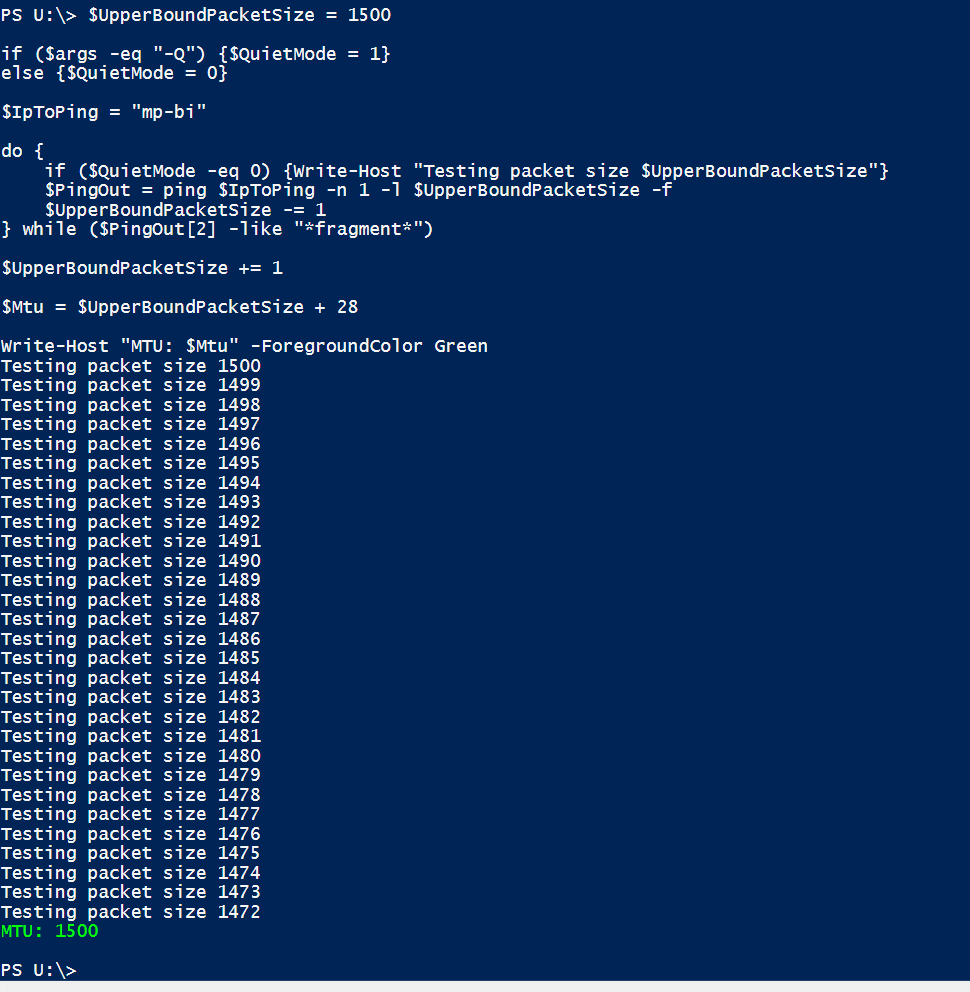What is the “best” PacketSize argument to establish a connection to a SQL Server?
The answer is: It depends (on your very specific network)!
In our case a setting of a value higher than 1500 Bytes does not have a positive outcome. That is because the MTU of the Network has a maximum of 1.500 Bytes per Packet. This is often the case, because the implementation of the IP Protocol v2 uses this as the maximum packet size.
To figure out, what is the maximum value in your network, use the following Power Shell Script, originally authored by Thomas Stringer (http://sqlsalt.com), found in this great article by Robert L Davies (http://sqlsoldier.net/wp/sqlserver/networkpacketsizetofiddlewithornottofiddlewith):
$UpperBoundPacketSize = 1500
if ($args -eq "-Q") {$QuietMode = 1}
else {$QuietMode = 0}
$IpToPing = "mp-bi"
do {
if ($QuietMode -eq 0) {Write-Host "Testing packet size $UpperBoundPacketSize"}
$PingOut = ping $IpToPing -n 1 -l $UpperBoundPacketSize -f
$UpperBoundPacketSize -= 1
} while ($PingOut[2] -like "*fragment*")
$UpperBoundPacketSize += 1
$Mtu = $UpperBoundPacketSize + 28
Write-Host "MTU: $Mtu" -ForegroundColor Green
